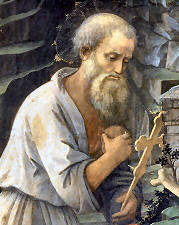 Saint Hilarion the Great
Saint Hilarion the Great
Patriarch of the Solitaries of Palestine 291–371
Feast – October 22
In the third century, of the many gods of the Romans, Jupiter, the son of Saturn, was their supreme god. On the other hand, the empire had been assembled from a great number of territories whose peoples had already established their own way of life. They were not about to surrender it, nor were they ever asked to do so by their conquerors. What characterized the religious life of the empire as a whole was the continued vitality of local cults in combination with a generally reverent awareness of one’s neighbors’ cults. The emperor, for example, might openly offer personal veneration to his favorite god, but when he was on his travels, he would offer cult at the chief shrines of all the localities he visited. This half-hearted faith lead many citizens of the Roman empire to look for a deeper sense in their existence, and Christianity was the answer.
One of them was Saint Hilarion, born about 291 at Tabatha, five miles to the south of Gaza, Palestine. He was sent by his pagan parents to Alexandria to study grammar at a very early age. He was a thin and delicate youth of fragile health who grew like a rose out of thorns. Through his progress in learning, he gave evidence of his wit, while his good temper and dispositions fostered love from those that knew him.
At the age of fifteen he became a Christian and a new man, renouncing all the mad sports of the circus, the entertainments of the theatre and taking no delight but in the churches and assemblies of the faithful.
St. Hilarion was attracted by the renown of the anchorite, St. Anthony the Great, and desiring to study with him and learn what is pleasing to God he retired to the desert. He carefully observed everything in the life of the “Father of Anchorites.” St. Hilarion was moved by the example of his virtue, observing his manner of life, his fervor in prayer, humility in receiving the brethren, his severity in reproving them, his earnestness in exhorting them, and his perseverance in austerities. However, he was not able to bear the frequent concourse of those who resorted to St. Antony to be healed of diseases or delivered from devils. Desiring to serve God in perfect solitude, after two months St. Hilarion resolved to devote himself to the ascetic life of a hermit. He returned home to find that his parents had died. After distributing his family’s inheritance to the poor and then despite his youth and delicate health he withdrew to a little hut in the desert of Majuma, near Gaza, where he led a life similar to that of St. Anthony.
He took with him only a shirt of coarse linen, a cloak of skins given to him by St. Anthony, and a coarse blanket. He led a nomadic life, not partaking of his frugal meal until after sunset. He supported himself by weaving baskets. He lived first in a cabin of reeds, then in one of clay, so low and narrow that it seemed more like a tomb than a lodging for a young man, never washed his clothes, changed them only when they fell apart, and shaved his hair only once a year. He experienced spiritual dryness that included many violent temptations and assaults from the infernal spirit expending all their efforts to make him abandon this life of total renouncement. Often when he lay down did naked women appear to him and sumptuous feasts when he was hungry! During prayer Saint Hilarion heard children crying, women wailing, the roaring of lions and other wild beasts.
He was victorious by the assistance of omnipotent grace. The phantoms of the enemy St. Hilarion dissipated by casting himself upon his knees and signing his forehead with the cross of Christ
He fought them with heavy labor, fasting and fervent prayer. Where beset by carnal thoughts, he fasted even more. According to St. Jerome he was “so wasted that his bones scarcely held together.” When the deafer heaven seemed to his cries on such occasions, the louder and the more earnestly he persevered knocking.
Being enlightened and strengthened by a supernatural grace, he never suffered himself to be imposed upon by the artifices by which the devil strove to withdraw him from holy prayer, in which the saint spent the days and great part of the nights. To have dropped the shield of prayer under these temptations would have been to perish.
Once . . . when he was eighteen years old, brigands tried to find him at night. Either they believed that he had something to steal or they thought he would scorn them if they didn’t intimidate him. . . . From evening till dawn, they hunted in every direction but couldn’t find him. In the broad daylight, however, they came upon him and apparently as a joke asked him: “What would you do if robbers attacked you?” He answered: “A naked person does not fear robbers.” “You could be killed.” “I could,” he said. “But I am not afraid of robbers because I am ready to die.” They were so touched by his answers they promised him to abandon their life of pillage.
He learned all of Holy Scripture by heart and repeated it with admirable devotion.
St. Hilarion began to work miracles by his prayers, and visitors made their way to his former solitude.
His first miracle was when he cured a woman of Eleutheropolis (a Roman city in Syria Palestine), despised by her husband of fifteen years because of her sterility, . . . was the first who dared to intrude upon blessed Hilarion’s solitude. While he was still unaware of her approach, she suddenly threw herself at his knees saying: “Forgive my boldness. . . ., he asked her why she had come and why she was weeping. When he learned the cause of her grief, raising his eyes to heaven, he commanded her to have faith and to believe. He followed her departure with tears. When a year had gone by, he saw her with her son. A second miracle much enhanced the saint’s reputation. Elpidius, who was afterwards prefect of the praetorium, and his wife Aristeneta, returning from a visit of devotion they had made to St. Antony to receive his blessing and instructions, arrived at Gaza, where their three children fell sick, and their fever proving superior to the power of medicines they were brought to the last extremity, and their recovery despaired of by the physicians. The mother, like one distracted, addressed herself to St. Hilarion, who, moved by her tears, went to Gaza to visit them. Upon his invoking the holy name of Jesus by their bedside, the children fell into a violent sweat, by which they were so refreshed as to be able to eat, to know their mother, and kiss the saint’s hand.
Later, he healed a paralyzed charioteer. Such was the grace that he received from God that he could tell by the smell of someone’s body or clothing which passion afflicted his soul.
Miraculous cures and exorcisms of demons which he performed spread his fame in the surrounding country, Many heathens were converted, and people came to seek his help and counsel in such great numbers that he could hardly find time to perform his religious duties. He refused all remuneration for his assistance, saying to his visitors from the city that they were better placed than he to distribute in alms the money they were offering him and that the grace of God is not for sale.
St. Anthony esteemed him highly, occasionally wrote him letters, and sent to him the sick persons who came to him from Syria, telling them they had no need to make so long a journey.
Many came to St. Hilarion wanting to save their soul under his guidance, in 329 numerous disciples assembled round him, thus giving rise to the monastic life in Palestine, of which St. Hilarion is regarded as the founder. With his blessing monasteries began to spring up throughout Palestine. Going from one monastery to another, he instituted a strict ascetic manner of life.
His exhortations to abandon idolatry were so powerful that on one occasion a group of Saracens promised to convert, asking him to send them a priest to baptize them and establish a church. One day, accompanied by three thousand persons who were following him, he blessed the vine of a solitary who received him. The vine furnished a triple harvest and all in the crowd were well nourished.
St. Hilarion found his solitude transformed into a city, the parade of petitioners and would-be disciples drove Hilarion to retire to more remote locations, but they followed him everywhere. Till that time neither Syria nor Palestine were acquainted with that penitential state; so that St. Hilarion was the first founder of it in those countries, as St. Antony had been in Egypt.
At the age of sixty-five St. Hilarion was informed by revelation of the death of St. Antony. Afflicted at the great number of bishops, priests, and people that were continually resorting to him, regretting the loss of that sweet solitude and obscurity which he formerly enjoyed, he wished to visit the places where St. Anthony had dwelt. His Palestinian disciples attempted to change his mind without success. Taking with him only forty monks, he set out for Egypt on foot. On the fifth day he arrived at Peleusium; and in six days more at Babylon, in Egypt. Two days after he came to the city of Aphroditon. After travelling three days in a horrible desert they came to mountains, where they found two monks, St. Antony’s disciples Isaac and Pelusius.
St. Hilarion returned to Aphroditon and withdrew with only two disciples into a neighboring desert. Exercised himself with more earnestness than ever in abstinence and silence; saying, according to his custom, that he then only began to serve Jesus Christ. It had not rained in the country for three years, that is, ever since the death of St. Antony, when the people in deep affliction and misery addressed themselves to St. Hilarion, whom they looked upon as St. Antony’s successor, imploring his compassion and prayers. The saint lifted his hands and eyes to heaven, and immediately obtained a plentiful rain.
Even for saints like St. Hilarion who steadfastly pursued God, life is a battle of wills. He desired solitude, believing it was God’s will for him, but God had other ideas and sent crowds to disrupt his aloneness.
The saint, seeing the extraordinary honors which were paid him in that place, departed privately towards Alexandria, in order to proceed to the desert of Oasis. He turned from Alexandria to Brutium, a remote suburb of that city, where several monks dwelt. He left this place the same evening, and when these monks very importunately pressed him to stay, he told them that it was necessary for their security that he should leave them.
When Julian the Apostate ascended the throne, in revenge of the affront St. Hilarion had put upon their god Mamas, the prince ordered the pagans of Gaza to kill him. That very night armed men arrived there in pursuit to put him to death.
The saint spent about a year in the desert of Oasis and finding that he was too well known in that region, he determined to seek shelter on some remote island, embarking with one companion for Sicily.
He landed at Pachynus, a famous promontory on the eastern side of the island, now called Capo di Passaro. St. Hilarion, fearing lest he should be discovered if he settled near the coast, travelled twenty miles up the country and stopped in an unfrequented wild place near the promontory of Pachinum. His disciple, Hesychius, who had long sought him heard at Modon, in Peloponnesus, that a prophet who wrought many miracles had appeared in Sicily. He embarked and after arriving at Pachinum he inquired for the holy man at the first village, easily finding him famous among the locals for his miracles and his disinterestedness. Soon St. Hilarion saw himself again surrounded by disciples eager to follow his holy example.
St. Hilarion, desiring solitude, decided to go into a country where not even his language should be understood. Leaving Sicily, he went to Epidaurus in Dalmatia now Old Ragusa. In Dalmatia miracles again defeated the saint’s desire of living unknown.
In 366 he saved a city from being engulfed by tidal waves raised by a great earthquake and rendered valuable assistance to the inhabitants.
St. Hilarion, seeing it impossible to live there unknown, fled away in the night in a small vessel to the island of Cyprus. Being arrived there, he retired to a place two miles from Paphos. He had not been there three weeks when people possessed with devils in various parts of the island began to cry out that Hilarion, the servant of Jesus Christ, was come.
He tried many times to live unknown but never could succeed. After two years Hesychius persuaded him to lay aside that goal and retire to a solitary place which he had found twelve miles from the shore, not unpleasantly situated among very rough and craggy mountains. It was during his sojourn in Cyprus that he became acquainted with St. Epiphanius, Archbishop of Salamis
The saint, in the eightieth year of his age, wrote a short letter with his own hand, a last will and testament, in which he gave to his faithful disciple, Hesychius all his possession his book of the gospels, his sackcloth, hood, and little cloak.
Many pious persons came to see him in his last sickness, hearing he had foretold that he was to go to our Lord.
St. Hilarion died in 371, or the following year, on the island of Cyprus being about eighty years of age.
He expressed his sense of the divine judgments but encouraged his soul to a humble confidence in the mercy of his Judge and Redeemer. His last words were: “Go forth, what cost thou fear? go forth, my soul, what cost thou apprehend? Behold, it is now threescore and ten years that thou hast served Christ; and art thou afraid of death?”
His body was found incorrupt some time afterwards and was transported to Palestine to his original monastery near Majuma.
References and Excerpts
[1] “Saint Hilarion, Patriarch of the Solitaries of Palestine.” https://sanctoral.com/en/saints/saint_hilarion.html (accessed Nov. 06, 2020).
[2] “CATHOLIC ENCYCLOPEDIA: St. Hilarion.” https://www.newadvent.org/cathen/07347a.htm (accessed Nov. 06, 2020).
[3] “Venerable Hilarion the Great.” https://www.oca.org/saints/lives/2000/10/21/103009-venerable-hilarion-the-great (accessed Nov. 06, 2020).
[4] “St. Hilarion | EWTN,” EWTN Global Catholic Television Network. https://www.ewtn.com/catholicism/saints/hilarion-603 (accessed Nov. 06, 2020).
[5] “Saint Hilarion,” Loyola Press. https://www.loyolapress.com/catholic-resources/saints/saints-stories-for-all-ages/saint-hilarion/ (accessed Nov. 06, 2020).
[6] “Hilarion,” Wikipedia. Oct. 21, 2020, Accessed: Nov. 06, 2020. [Online]. Available: https://en.wikipedia.org/w/index.php?title=Hilarion&oldid=984665226.
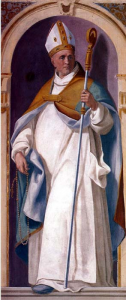 Saint Hugh
Saint Hugh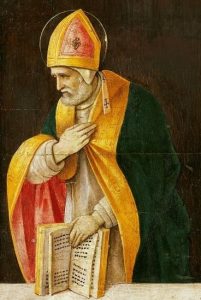 Saint Albinus
Saint Albinus Saint Eucherius
Saint Eucherius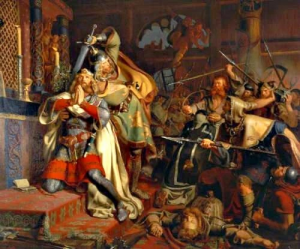 Saint Canute
Saint Canute Saint Damasus
Saint Damasus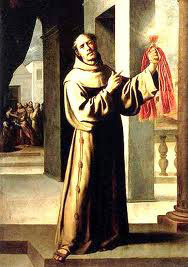 Saint James of The March of Ancona
Saint James of The March of Ancona Saint Hilarion the Great
Saint Hilarion the Great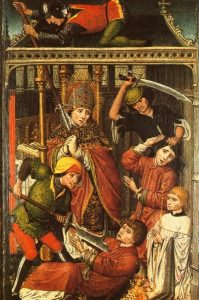 Saint Lambert
Saint Lambert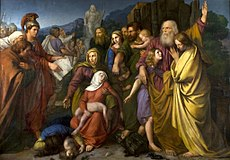 Special times, special measures.
Special times, special measures.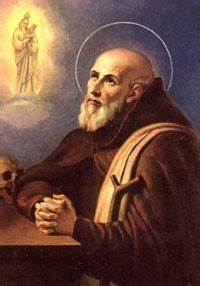 Blessed Marco D’aviano
Blessed Marco D’aviano